Making delicious gluten free yeast breads isn’t difficult, it just seems like it ought to be. In fact, in many ways gluten free bread baking is easier and quicker than it is to bake a traditional bread with gluten.
Using the right recipe and the best gluten free ingredients, you don’t even need a loaf pan! Follow my gluten free bread help check list, and these 18 Tips for Gluten Free Bread Baking will bring you delicious gluten free bread baking success!
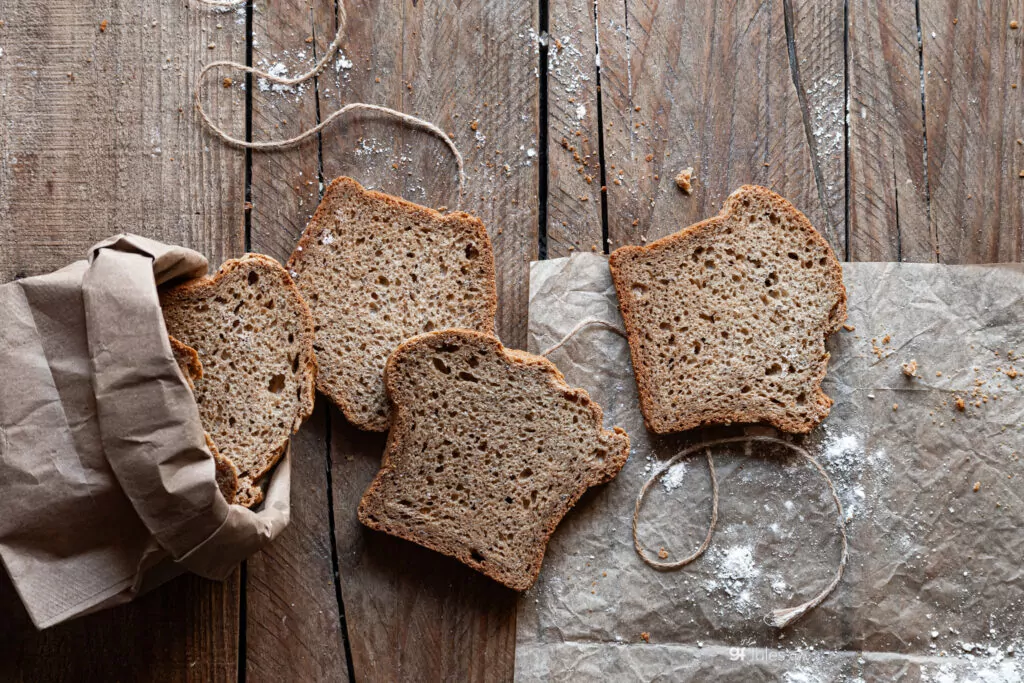
The first rule of thumb is of course to choose your gluten free ingredients wisely, as without this strong foundation, no gluten free bread will be the soft, fluffy, non-sinking loaf we all desire.
My gfJules Gluten Free All Purpose Flour is an excellent choice for all sorts of from-scratch bread baking, my corn-free Multigrain Flour also makes a beautiful loaf of bread, as does my grain-free Nada Flour, but my gfJules Gluten Free Bread Mix is the easiest way to get to bread baking nirvana.
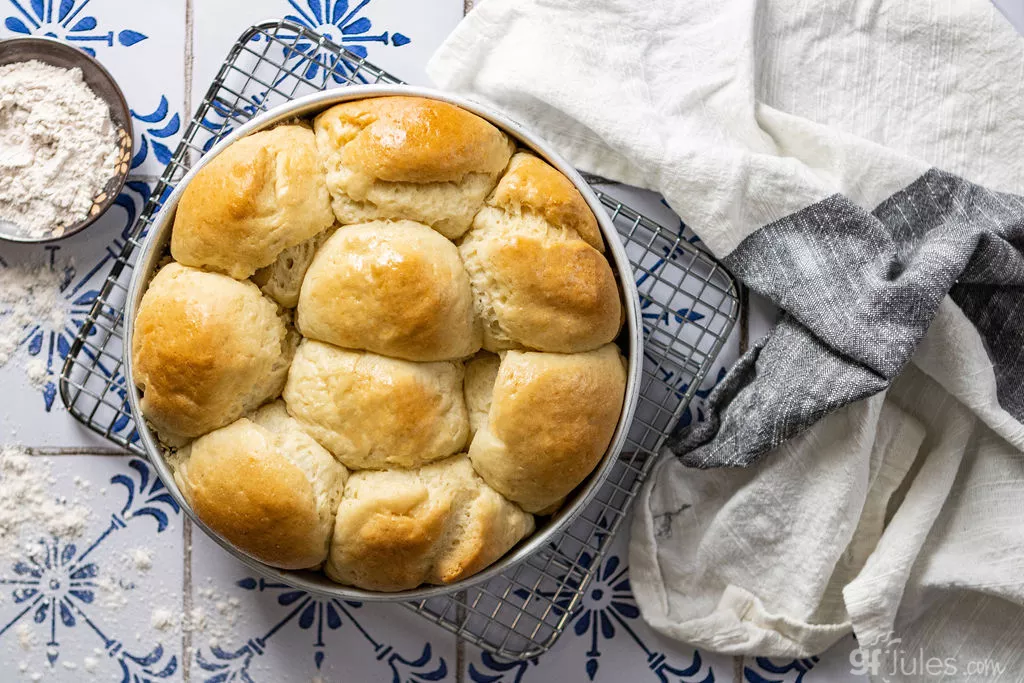
For my tips on baking gluten-free bread in a bread maker, hop to my article here.
For my review of over 10 different gluten free bread makers, hop here.

18 Tips for Gluten Free Bread Baking
1. Don’t scoop flour!
When measuring flour, don’t scoop from the bag with your measuring cup. This can compress the flour — up to 25%! Use a spoon to scoop flour into the measuring cup and level off with a knife instead. Here’s how to measure your gluten free flour properly.
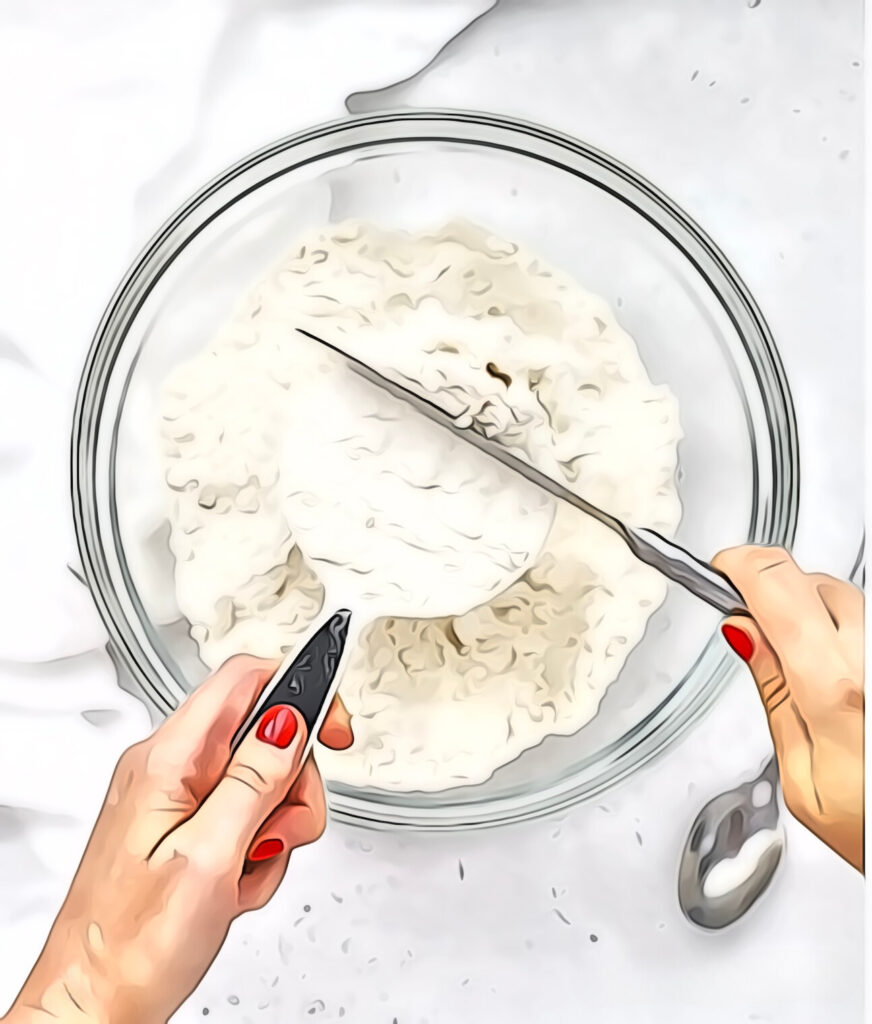
2. Weigh your ingredients.
One step better is to weigh your flour. My gfJules™ All Purpose Gluten Free Flour weighs 135 grams per cup. gfJules Corn-Free Multigrain Biscuit & Breakfast Baking Flour weighs 140 grams per cup. gfJules Nada Flour weighs 110 grams per cup. Make sure you know what the flour you’re using weighs, and if the recipe calls for gram weights as well as cups, go with the proper gram weight per cup of the flour you’re using.
Measuring by weight will ensure that you have the correct amount of flour in any recipe.
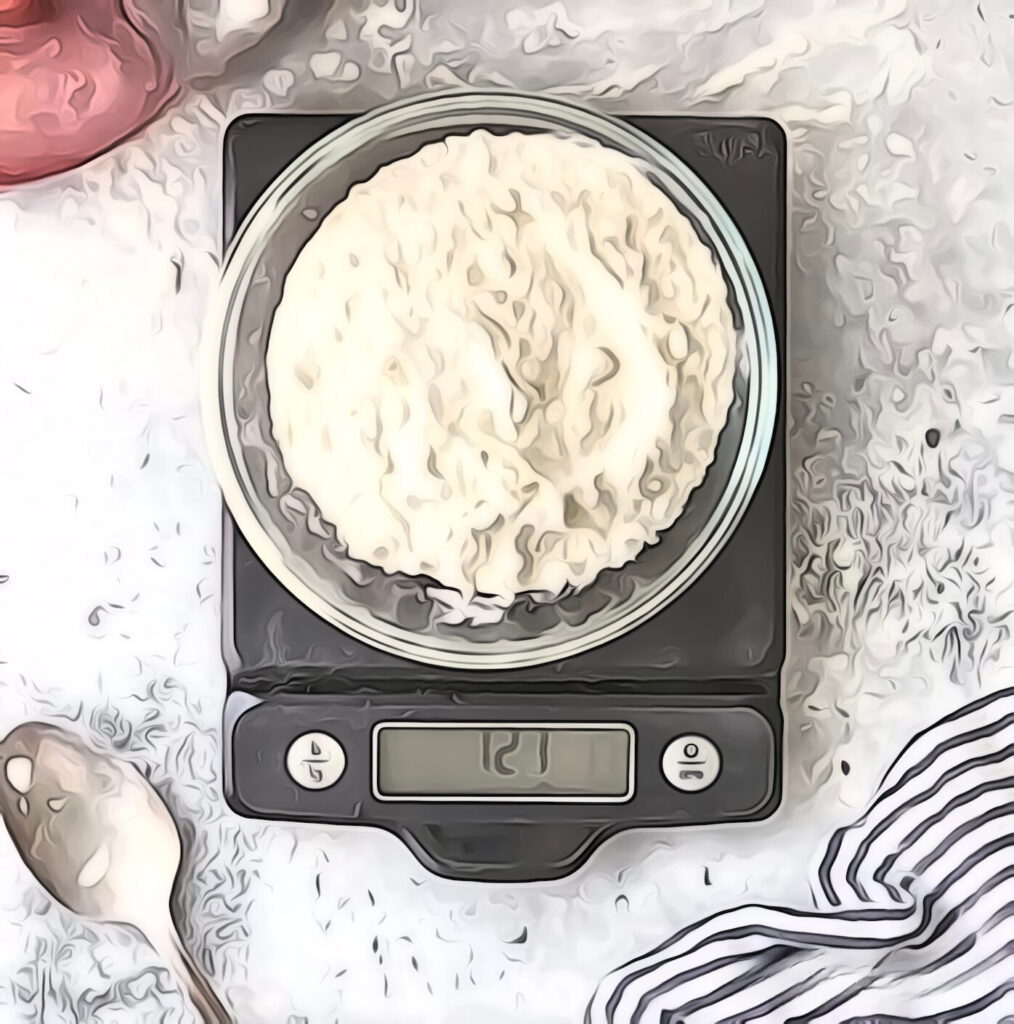
Even 1/2 cup of flour can make a huge difference in the results you get with any recipe. It’s not enough to just use any gluten free flour you choose; gluten free flours aren’t necessarily interchangeable. Follow the flours recommended for each given recipe to get the results promised.
3. Room temperature ingredients make a huge difference!
It is particularly important for yeast recipes that you bring all of your ingredients, such as eggs, to room temperature before adding them together to make bread.
Yeast needs warmth to grow and if your ingredients are too cold, it may prevent full yeast growth. Don’t make your wet ingredients too hot though, just nice and warm, the way yeast likes it! The ideal temperature for yeast to activate is around 100F/38C.
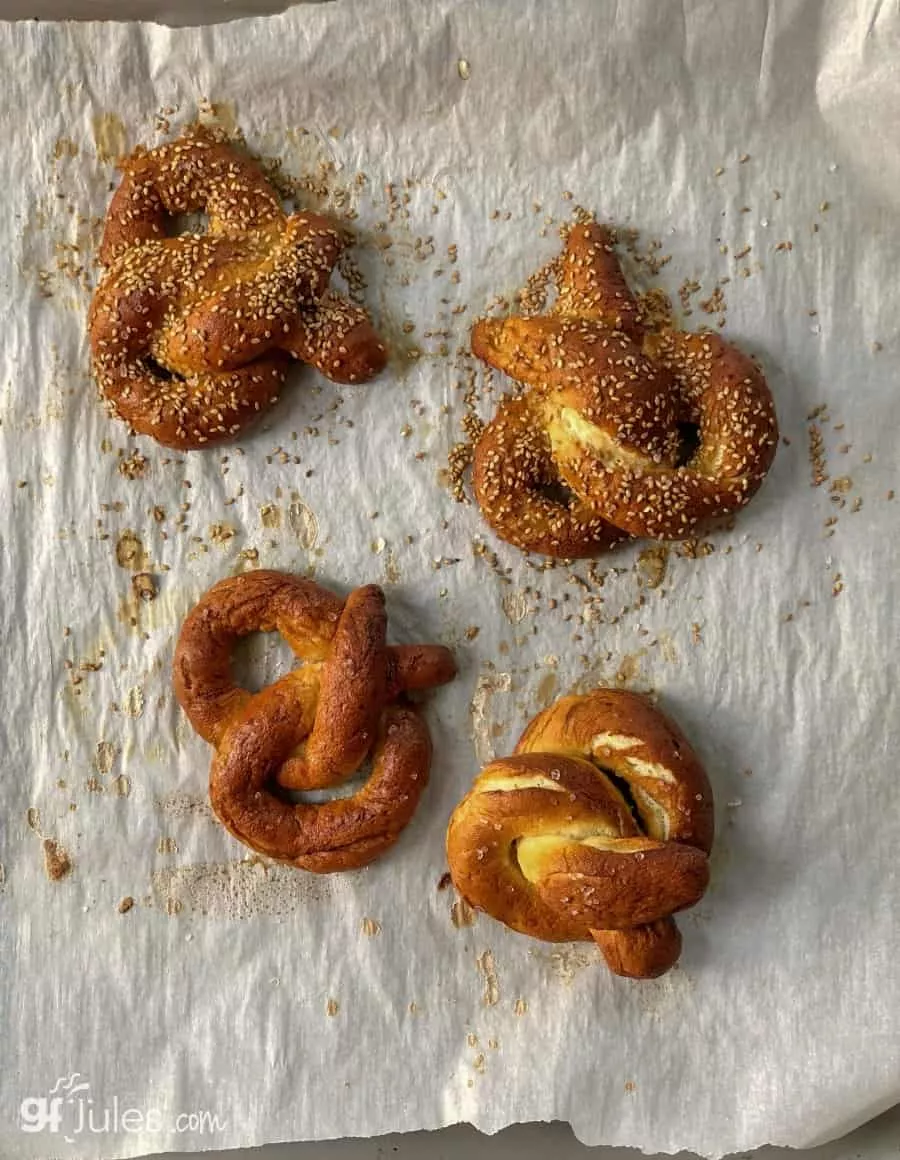
4. When baking gluten free bread, don’t follow directions (for wheat bread).
It is essential when converting wheat-based bread recipes to gluten-free, that you not follow the directions. That’s right! Break all the wheat/gluten dough rules when baking gluten-free bread! Any kneading beyond simply mixing the dough well, and any punching down of the gluten-free dough will punch the risen life right out of it. Those steps are designed to “exercise the gluten” and make it more elastic.
We have no gluten in our recipes, so nothing to exercise, and more than that, these steps will actually cause your gluten-free recipe to fail! It is for this reason that I counsel people when first attempting to make gluten-free breads, to follow a gluten-free bread recipe or two, just to get the hang of it. If you are an accomplished bread baker, it may feel weird for you to abandon these techniques, but trust me, you must!

5. Shape gluten free breads before rising.
Because our gluten free breads have no rise and punch down and second rise and punch down … you’ll want to shape any breads before the rise (they’ll only rise once!).
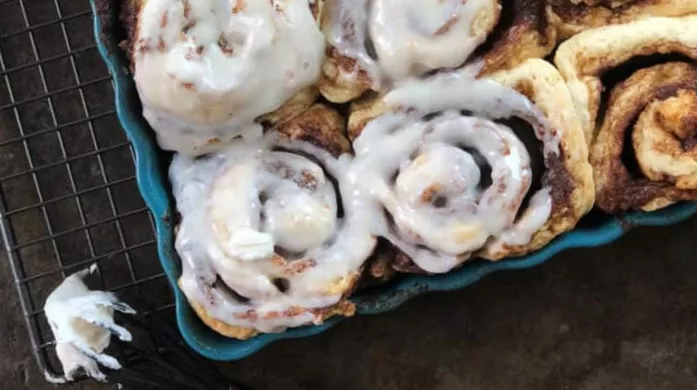
Dinner rolls should rise in the shape or tin you would like them to bake in; bread sticks should be formed before rising; cinnamon rolls should rise in their pans; challah must be braided and then allowed to rise. Don’t mess with gluten-free dough once it has risen, just bake it!
6. High altitude can change the way yeast doughs behave.
Have a look at my High Altitude GF Cooking Tips.
7. Take your gluten free bread’s temperature.
It is very important not to take your bread out of the oven before it is fully cooked. If the bread has a rubbery layer at the bottom, this usually means it was not fully cooked. The best way to tell if the bread is done is to insert an instant read thermometer all the way to the bottom of the loaf (but not touching the pan). The temperature should be approximately 205-210º F when it is done. Your bread should keep its shape when it is completely baked. Internal thermometers are available in my shop.
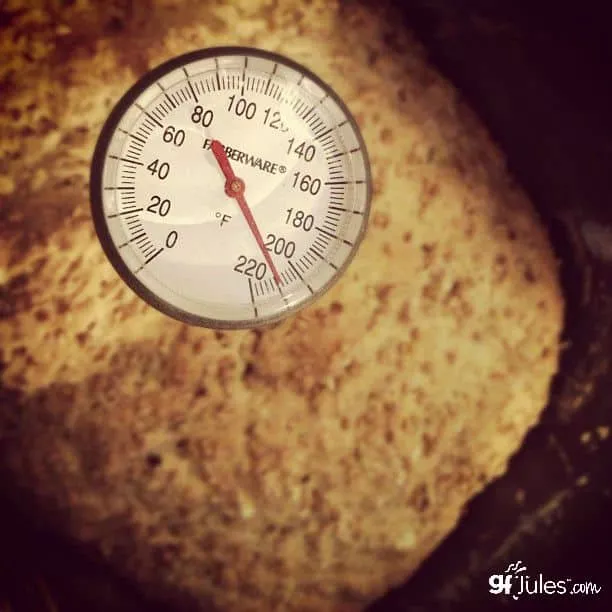
8. Change your bread pan.
Metal pans tend to work better than glass for fully cooking a loaf of bread. Metal pans do not have to be fancy or expensive. Most of my bread recipes work best in 9 x 5 pans, as they are larger volume breads. Stoneware or ceramic pans also bake well.
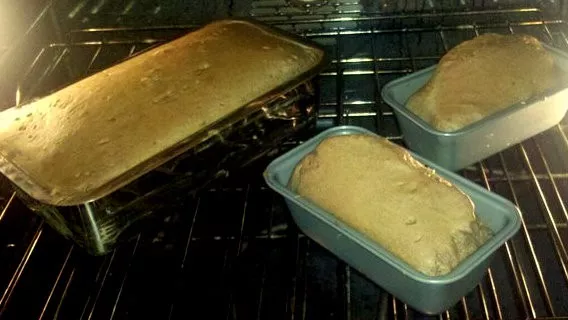
If you’re having trouble with your bread bakes, switch out the pan size or material and see if that makes a difference.
9. Make sure your rising spot is nice and warm.
A great method for letting your yeast breads rise before baking is to turn on your oven to 200º F, then turn it off when it has reached temperature.
Put your un-raised bread into the warmed oven with an oiled piece of parchment on top and a bowl of water in the oven with it, then let it rise according to directions. Once raised, remove the parchment and bake according to directions.
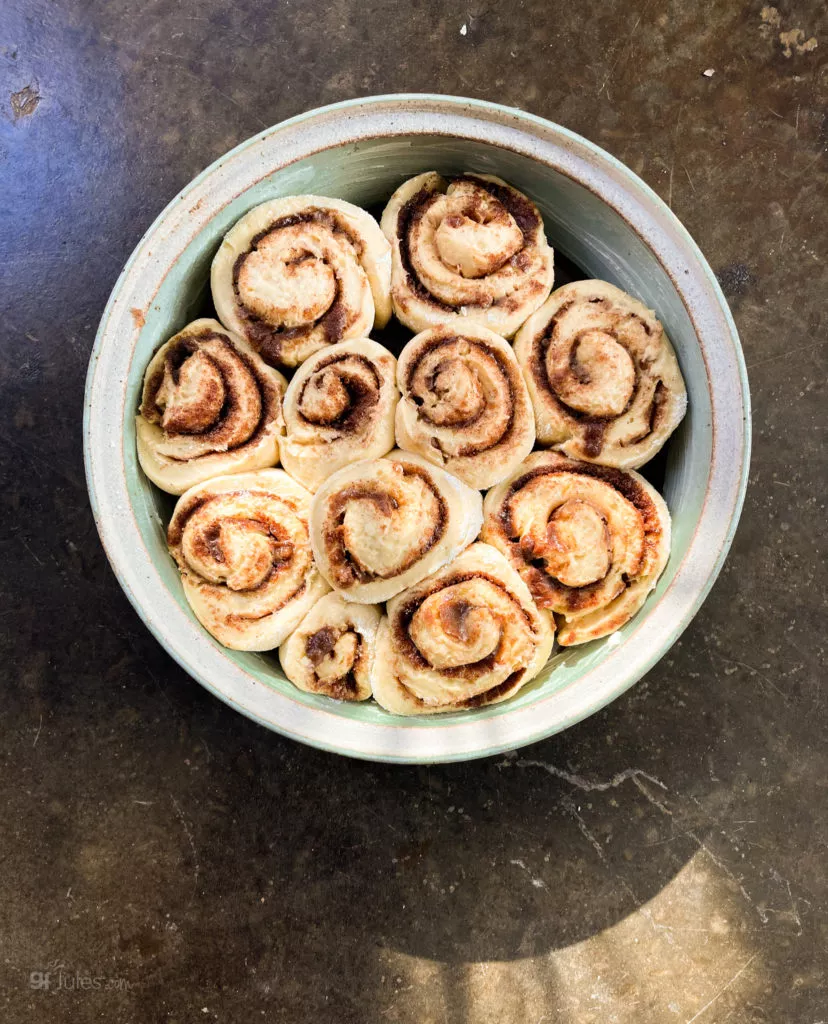
10. Find the perfect rise time and place.
The longer you can let your bread rise, the better it will taste and the less likely it will be to collapse … to a point. A good rule of thumb is to let the bread rise to the top of your pan before baking; a slower, cooler rise to that level will produce a better loaf, so make sure it isn’t rising in too warm of a spot.
If you can let the gluten free bread dough rise overnight in a cool — not warm — place, the slower rise will provide a stronger cell structure and more of a sourdough flavor when baked the next day. A refrigerated overnight rise is a great way to get a longer proof without weakening the bread’s structure.
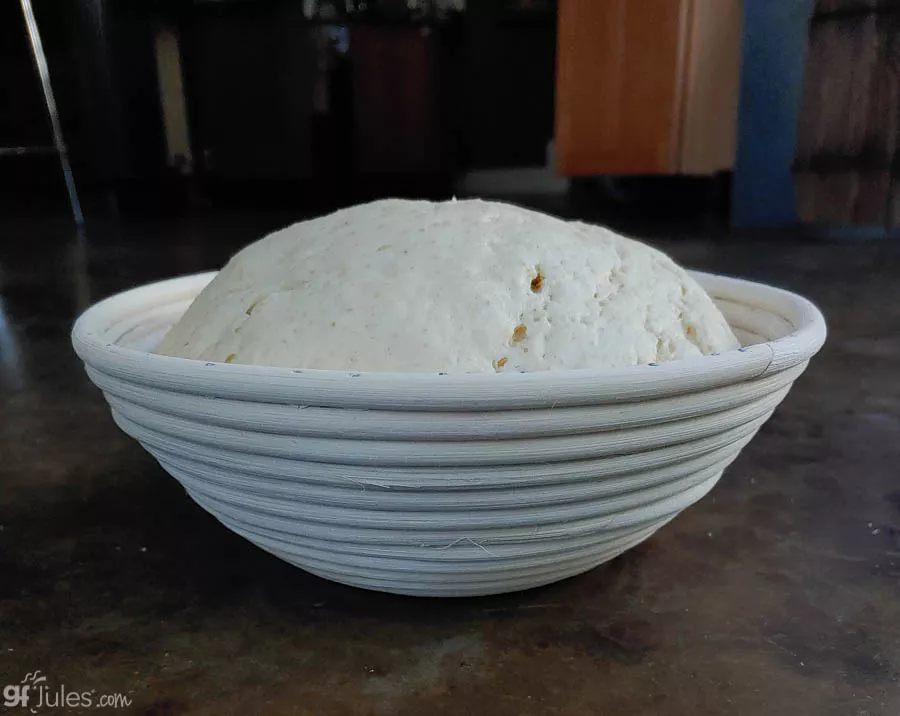
11. Proof your yeast properly.
“Proofed” yeast should look like this. If not, throw it out and start with fresh yeast. (Here’s lots more info on baking with yeast, if you’re interested!)
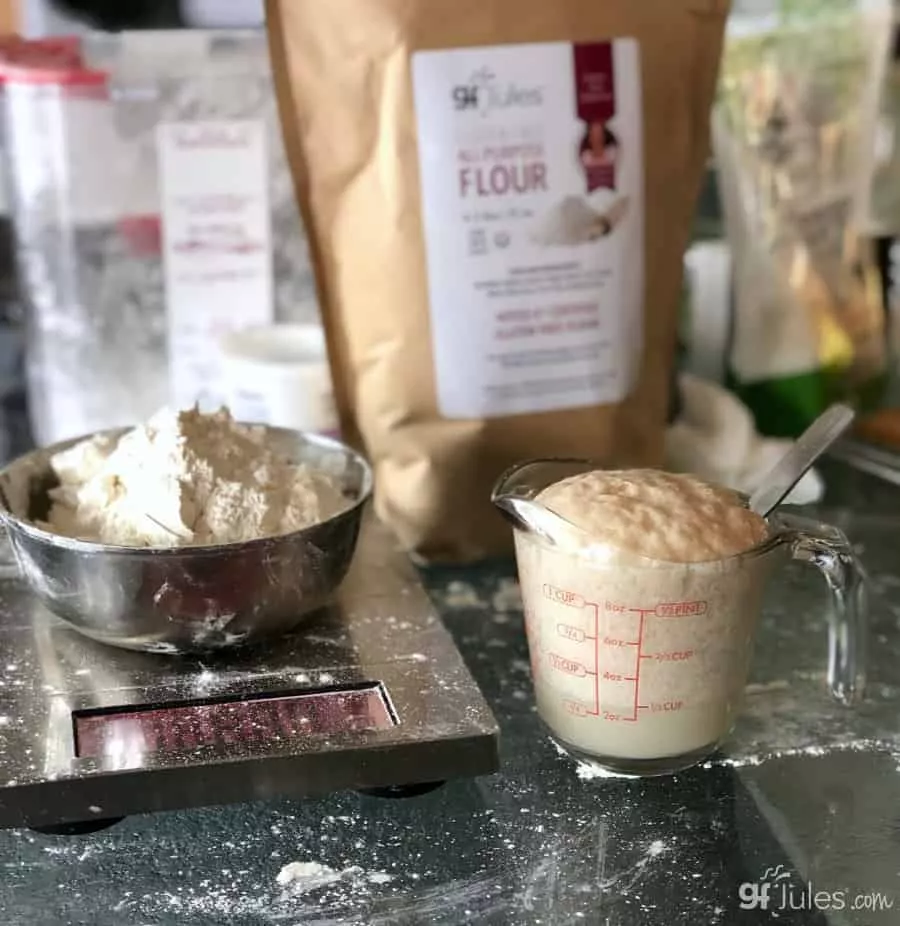
If you’re still having issues with getting your yeast breads to rise, try “proofing” your yeast first. I prefer using “Quick Rise” or “Rapid Rise” yeast for gluten-free yeast breads, but those kinds of yeast should not be proofed — simply add those with your dry ingredients. If you want to try proofing the yeast before adding to the recipe, use regular Active Dry Yeast instead.
Place the yeast in a bowl with the liquid called for in the recipe (water, milk, etc.), but make sure it’s warm. If you can add a teaspoon of sugar, that’s helpful. Whisk it gently and let it sit for 5 minutes. If it’s starting to have that familiar yeasty smell, foam up and swell, it’s good and you can add it to your recipe; if it’s stagnating and not getting foamy or rising, throw it out.
12. Check ingredient integrity.
Yeast can go bad, as can baking soda and baking powder. Sometimes the problem is your ingredients, not you. What a relief, right?
So, how often do you need to replace baking powder and baking soda? As long as the expiration date on each product hasn’t passed, opened cans of baking powder should be used within 3-6 months; opened containers of baking soda should be used within 6 months. I err on the more conservative side of 3 months, and if my baking soda has clumps, I open a new container. Who wants to ruin a recipe just because the leaveners aren’t active enough?
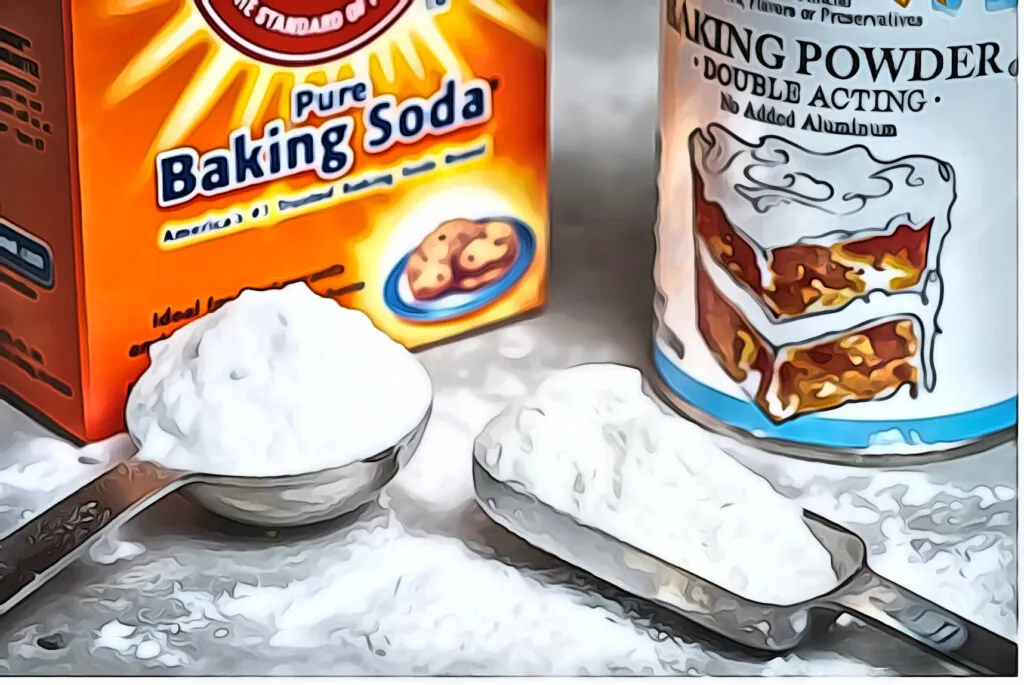
To test whether your leaveners are still active:
How Do I Test Baking Soda?
- Spoon a small amount of baking soda into a bowl
- Add a few drops of lemon juice or vinegar
How Do I Test Baking Powder?
- Spoon a small amount of baking powder into a bowl
- Add hot water
If the mixture fizzes quickly, the baking soda or baking powder will still work well in your recipe. If not, replace it with a fresh container. Use the old box of baking soda in your refrigerator as a deodorizer!
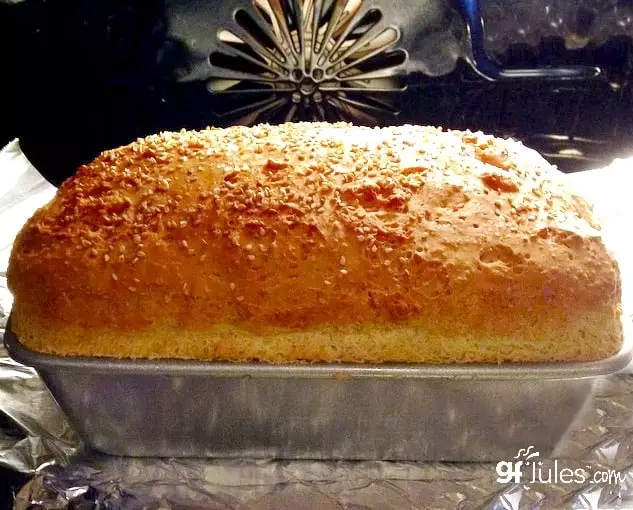
13. Cool bread slowly.
When your bread is done cooking, turn off the oven and open the door so that the bread can cool slowly. Taking the bread out of a hot oven and quickly transferring it to a cool counter can sometimes cause the loaf to sink in.
If it still sinks, it may have too much moisture to support itself fully. It should still taste great, but if you have your heart set on a nice crowned loaf, next time try cutting back on the liquid a bit in that recipe or adding 1/4 cup of flaxseed meal to help support the bread’s structure and enhance its nutritional value, all in one! Altitude and even the day’s weather can affect sometimes-picky yeast recipes.
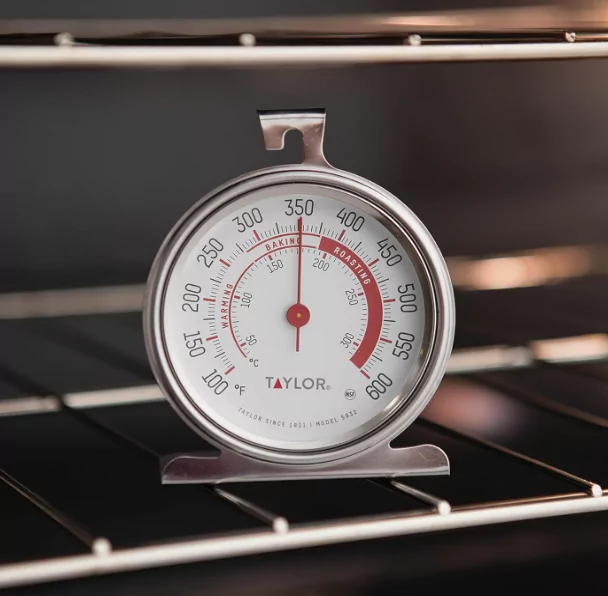
14. Calibrate your oven temperature.
Oven temperatures are frequently off by as little as 25 degrees and it can make a big difference in something as finicky as a yeast bread. Invest in an oven thermometer (they’re less than $10) and adjust your oven’s temperature so your bread will bake comfortably, at the temperature it likes. Here’s how to calibrate your oven without having to call an appliance repair service!
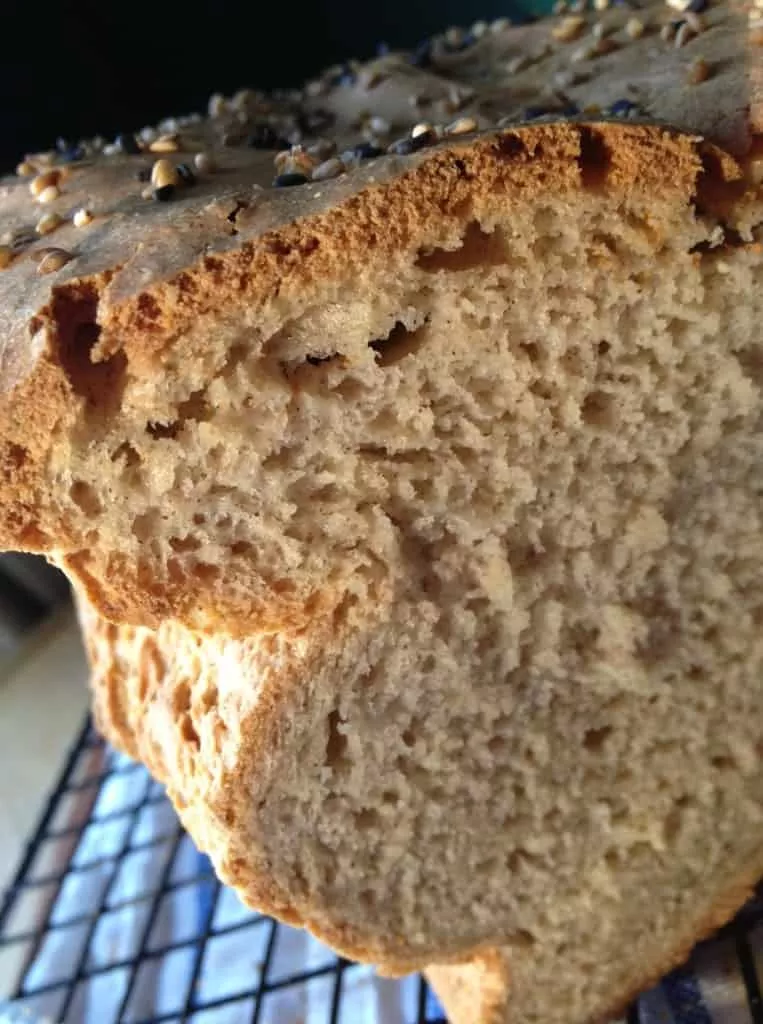
15. Bubbles add air (duh, right?).
It’s amazing what adding bubbles can do for the lift in your bread loaf! Try the same amount of gluten-free beer, ginger ale, 7-Up, Perrier … you get the picture. Room temperature, of course, and measured appropriately (let the bubbles settle for accurate measurements). Check out this gorgeous gluten-free beer bread!
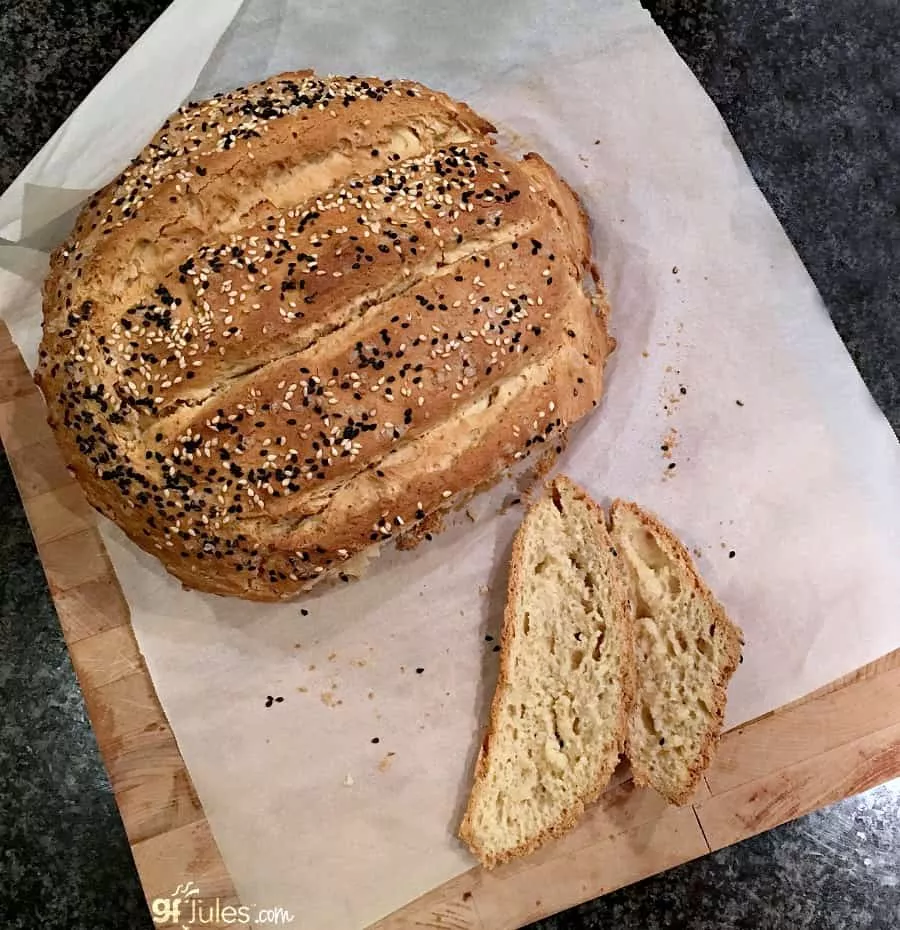
16. Fixing that rubbery bottom.
If you still wind up with a rubbery bottom on your loaf, there are a few things that could have gone wrong.
First, you might have over-beaten the dough. Unlike gluten doughs, gluten-free bread doughs should not be overworked, and doing so can sometimes make them a bit rubbery. Remember NOT TO PUNCH DOWN GLUTEN FREE DOUGHS.
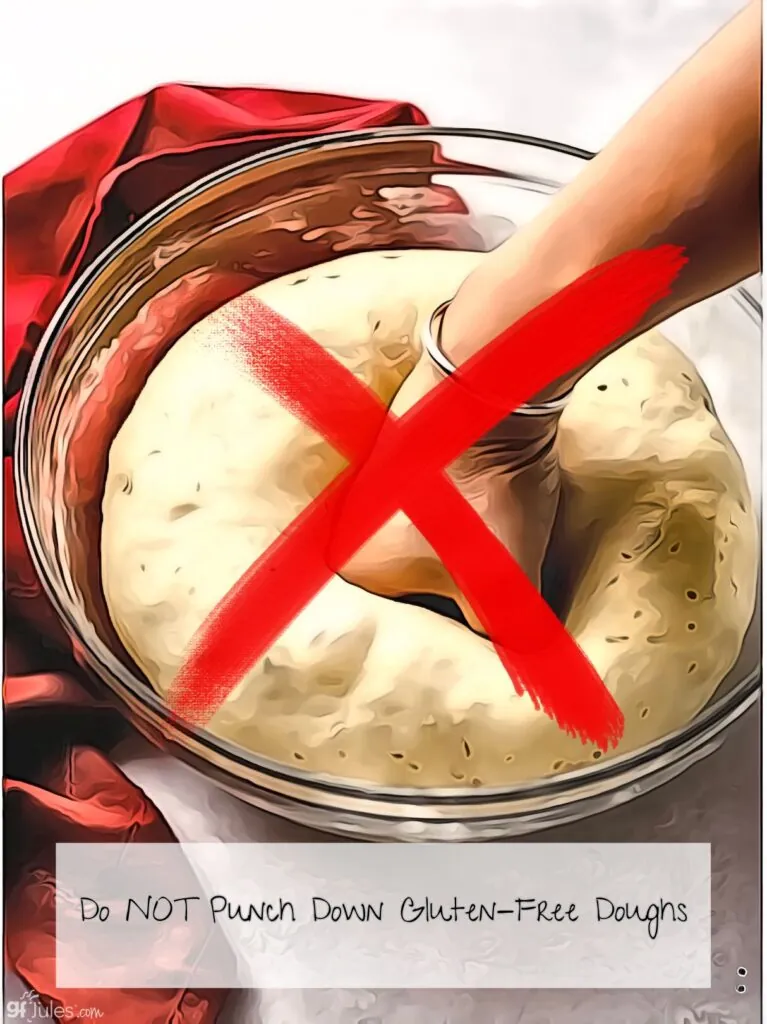
Second, if you are baking from scratch and adding your own xanthan or guar gum, you might have added too much. Find out more about baking with gums in this post.
Third, there might be too much liquid in your recipe, all settling at the bottom and not baking off, while also weighing down the dough. Fourth, the loaf might not have baked all the way. If the top is baked and getting a nice crust, but the bottom isn’t all the way done, cover the loaf with foil and keep baking!
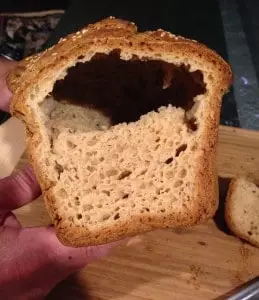
17. Where your loaf is baking also makes a difference.
Too close to the top of the oven, and the top will bake much more quickly than the rest of the bread, causing a split in the loaf. That’s quite a chasm, all because the bread rose so high that it nearly touched the oven’s heating element (and heat rises, don’t forget!). The rack of the oven shouldn’t be so high that the crust is that close to the heating element.
Convection bake settings also help with this, as convection keeps the temperature in the whole oven more consistent. Side note: also be sure there’s not an oven rack above the one on which your bread is baking – you don’t want the bread to rise during the bake and bump into the bottom of another rack!
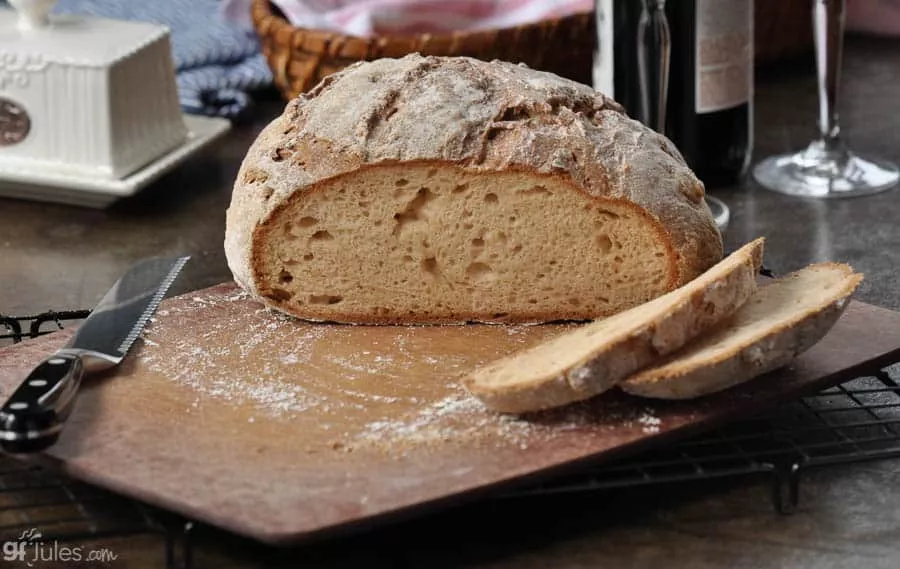
18. You don’t even need a bread pan to make great gluten free bread!
Try making a gluten free artisan loaf on a parchment-lined baking sheet, or baking in a springform or tall-sided oven-safe bowl or pan. Or even use muffin cups or popover trays! Your bread will be yummy no matter how you bake it, if you use the right ingredients!

(Ok, I guess there were more than a couple things …!)
Remember that the gluten free flours you choose ultimately make all the difference, so choose wisely. Then implement these 18 tips for best gluten free bread baking success!
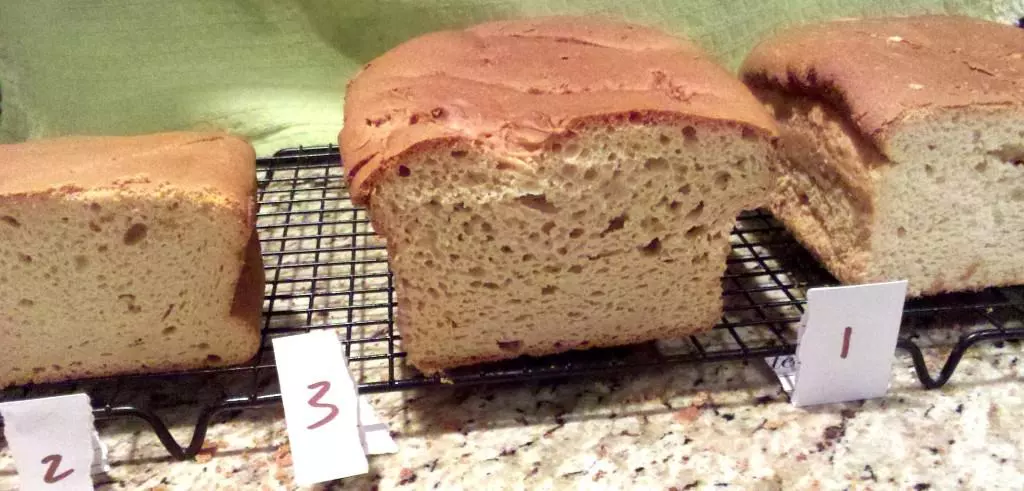
*Note: If you purchase one of these items after following my link, I may receive a small commission, at no additional cost to you, which I use to pay for web design, hosting and services for this blog.
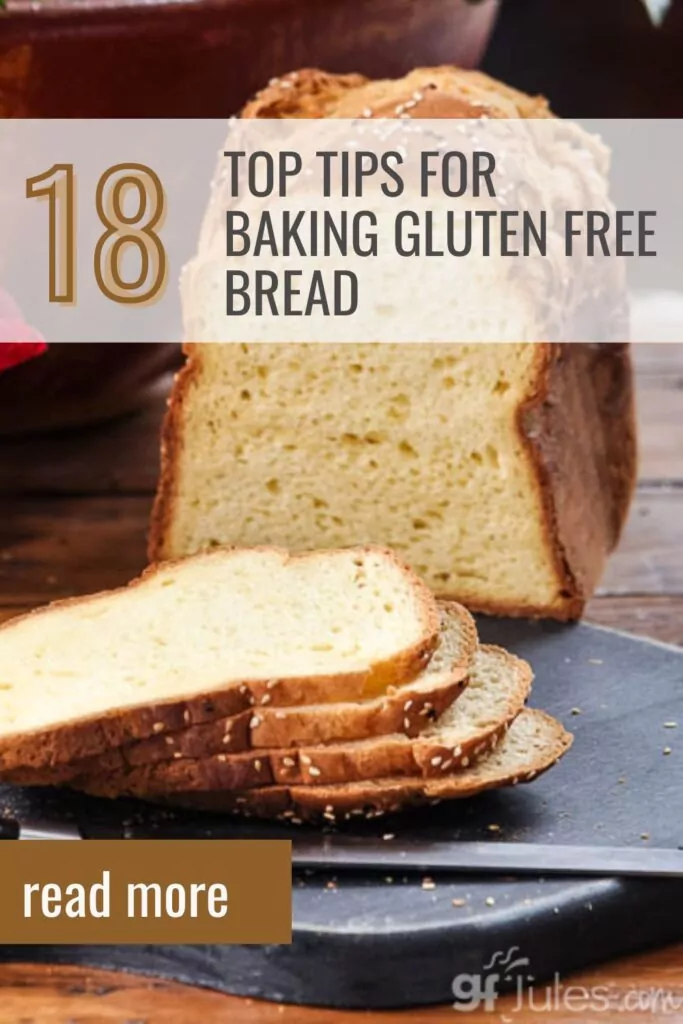
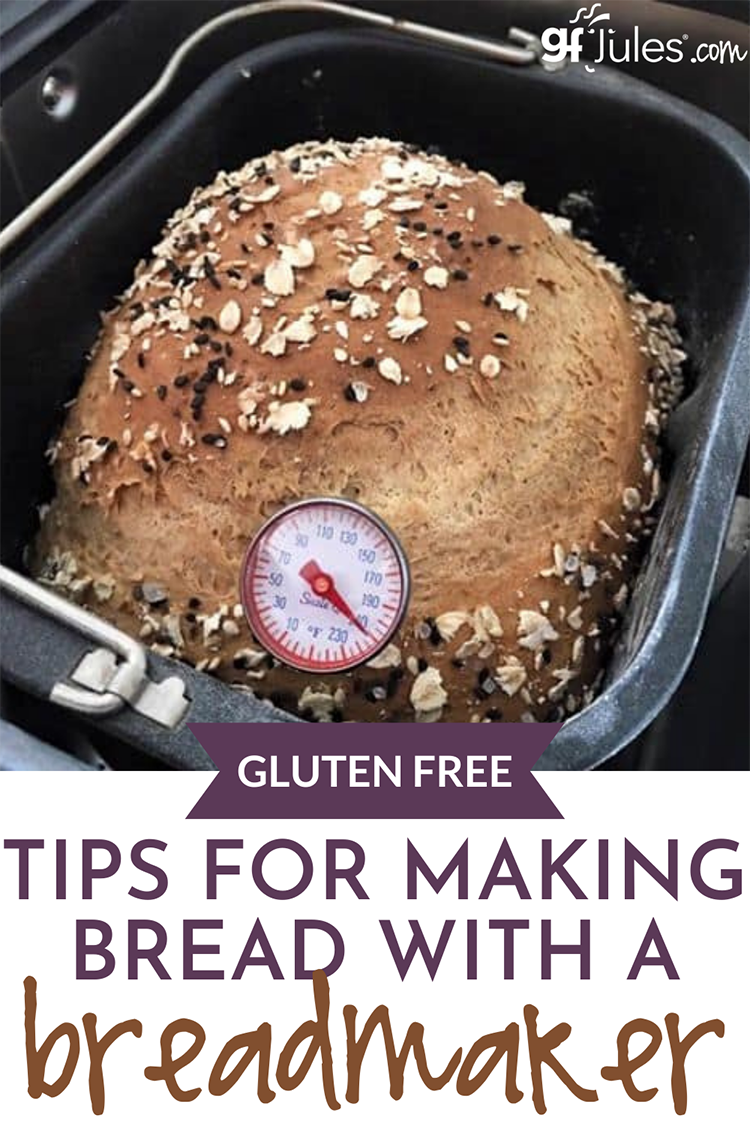



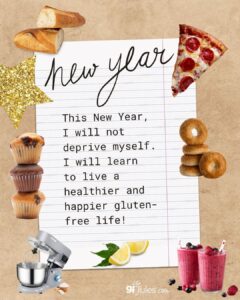
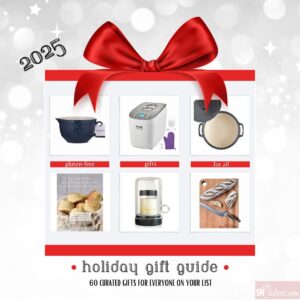
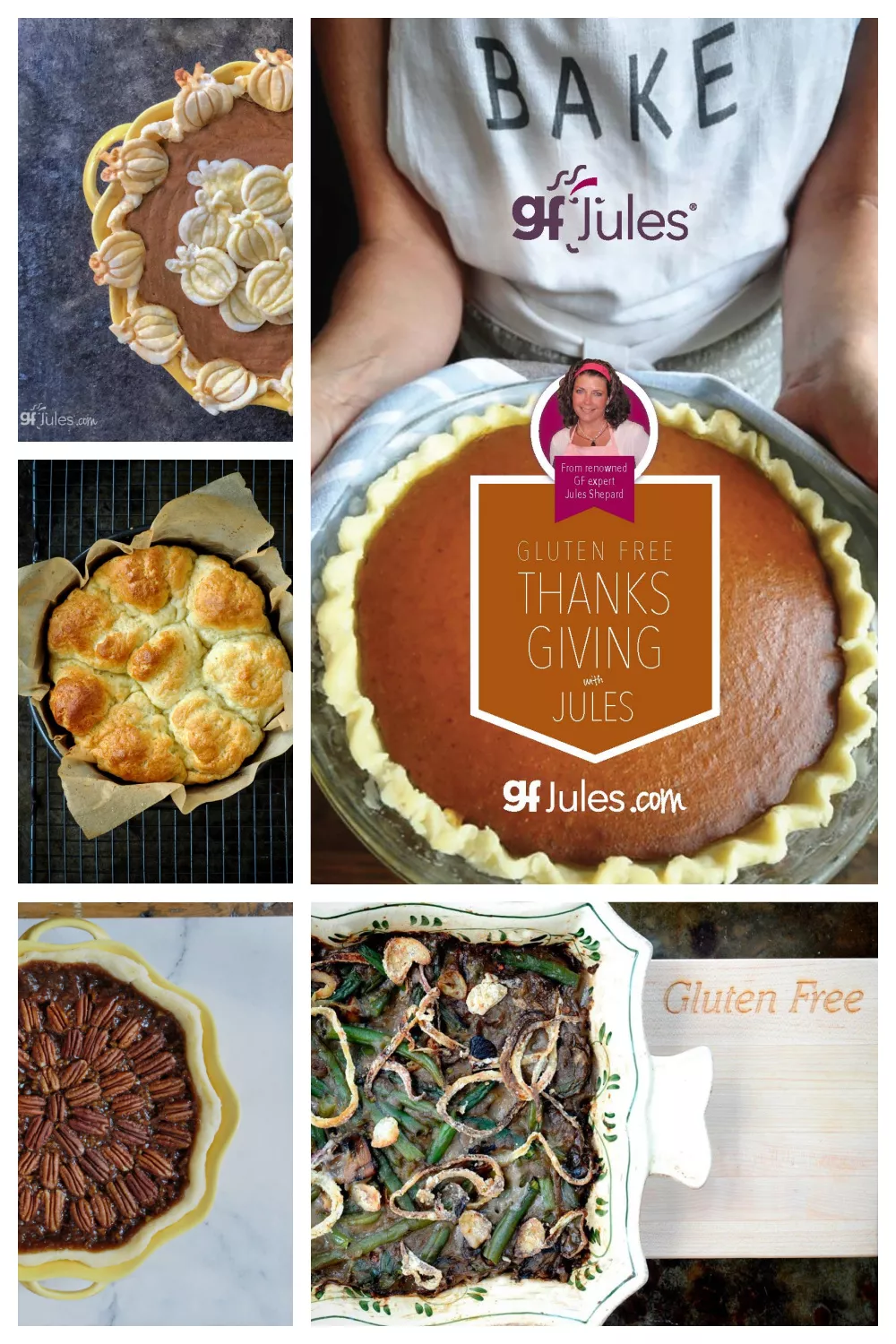


 (25 votes, average: 3.84 out of 5)
(25 votes, average: 3.84 out of 5)
















Alright, I have a question. So, you say that GF bread does not rise twice. But then you also say to let us rise in a slightly warmed oven (the 200 degree then turn off and let cool) and also let it rise for much longer in a cool place for structural integrity. So… does this mean there are two rises? Help me understand.
Hi Sarah, the two rises described are separate choices. You can do one or the other. The key is NO punchdown and second rise, so either let it rise in a warm place for about an hour, or let it rise longer in a cooler place for a slow rise. I hope that helps explain it.
~jules
Can I freeze hamburger buns after I bake them?
Hi Gretchen, absolutely! I’d recommend slicing them first and maybe putting a piece of parchment or wax paper between the slices before freezing in a freezer bag just to make it easier to separate and thaw them. They turn out great that way!
~jules
First of all your bread mix is THE BEST. I make my bread in a bread machine and am wondering if there is adjustment to the instructions to make the bread whiter?
I’m so glad to hear you love my gfJules Bread Mix! What bread machine do you have? I’m always curious to learn what machines (specific models) are working well for folks!
To make the bread as white as possible, use an oil that is as light in color as possible and you could use 4 egg whites instead of 2 whole eggs. That will make the color less yellow, but the bread mix itself does have some other whole grains in it that are not totally white so it will never be fully white.
~jules
I don’t do well eating products with potato starch ingredients. Your suggestions?
Hi Margie, check out my article on gluten free flour comparisons and see if that helps!
~jules
I have tried two recipes using buckwheat and both created a gummy texture. One I know I undercooked, the other was not removed until the internal temperature was 211F. Is there a recommended limit of Buckwheat in the flour mix, and what do GF breads need such long cooking times?
Hi Ken, check out my gluten free flour comparison article for info on flours like buckwheat, as well as suggested ratios. I don’t use a lot of it in blends, but a little can be nice! I generally find 60 min is perfect for most of my 2lb loaves to completely bake.
Thank you jules.i was in a car accident that left me with a brain injury, I get my questions answered by your site.Thank you.I m healing everyday. I was hoping I could bake this beautiful artisan gf sourdough bread. There it was!! Thank you
I’m so happy to be able to offer a resource for you, Teree, and also to hear that you are healing from your accident. I hope baking provides some therapy for your healing journey! Take care!!!
~jules
My oven has a bread proof setting – is that okay for proofing gluten free bread?
Hi Elizabeth, yes, that should be perfect! Be sure to also still cover the bread loosely to keep the moisture in.
~jules
Bonjour Jules
For the last year I am trying to make GF, lactose free bread. I almost need a chainsaw to cut the crust. Now that I know your site, I will correct what I can but I need a solution for that crust.
Bonjour! I don’t think the lactose free part is the issue, you just need the right gluten free recipe. Most of my recipes for gluten free bread don’t even call for milk at all anyway. (All of my recipes are dairy-free, by the way!) If you do find that a bread you bake is too crusty for your liking, you can always cover the loaf with foil during the entire bake, which will help keep the moisture in and prevent it from forming such a hard crust. Also bake on a rack farthest away from the heating elements. I also find that using bread machines or Dutch Ovens tends to make a softer crust. Check out some of my gluten free loaf bread recipes though, as I think you will enjoy them, crust and all!!!
~jules
What temperature should I bake my bread at? I used the 3ingredient recipe in a Dutch Oven for regular flour, used Bob’s Red Mill gf 1:1 flour. Recipe calls for 450 degree oven. Should I bake at a lower temp for gf bread? Thanks
Hi Janeen, I’m not familiar with that recipe, but it’s not likely that you would need to turn the oven down if baking in a Dutch Oven. I would follow the instructions for the recipe you’re using and see how it goes. Keep tabs on it as it gets close to the end of the bake time to be sure it doesn’t over-bake, though. Do you have an internal thermometer for your bread?
~jules
Wondering why my GF loaf, using a recipe I’ve used before, blew the lid off the Pullman pan and the bottom of the loaf was very gummy.
Hi David, Pullman pans can be tricky. I know some chefs that refuse to bake with them altogether. I typically only use them for my gluten free Pumpernickel recipe and my gluten free Sourdough recipes — both recipes are voluminous, and the pumpernickel is a batter bread that seems to behave well in the Pullman but I don’t bake with the lid on for either recipe. You could try again without the lid and see how that goes, as the lid will keep all the moisture from the rising bread inside and can lead to gummy bottoms sometimes. You could also try baking on a lower rack of your oven. I’d be interested to see how the bake goes next time without the lid and if it works out for you.
~jules